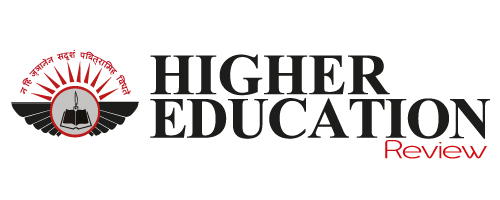Leadership in Emerging Tech: Navigating Change and Building Resilient Teams
 Dr Atul Patel, Dean (Academics) & Registrar, CHARUSAT, in an interaction with Higher Education Review shared his views on the key challenges in leading digital transformation initiatives in educational settings, and how can resilient leadership mitigate resistance to such change and more.
Dr Atul Patel, Dean (Academics) & Registrar, CHARUSAT, in an interaction with Higher Education Review shared his views on the key challenges in leading digital transformation initiatives in educational settings, and how can resilient leadership mitigate resistance to such change and more.
With rapid advancements in emerging technologies, what leadership qualities are essential for guiding academic institutions to stay relevant and competitive in the tech ecosystem?
Educational institutions are rapidly advancing in technology, which is crucial in today's swiftly evolving tech landscape. Leaders in these institutions must possess a combination of qualities, including strategic foresight, technological savvy, the ability to foster a culture of innovation, and adaptability in competitive environments.
Effective leaders draw researchers, students, and faculty while promoting collaboration with industry leaders and other institutions. This cooperation boosts the reputation of educational institutions by developing relevant programs and research opportunities. It's also essential for them to be attentive listeners, welcome diverse perspectives, foster dialogue, manage emotions, build strong relationships, and efficiently lead teams. By exhibiting integrity and accountability, they empower their teams to take ownership and initiative. These innovations are reshaping the educational experience and equipping students for the future.
What are the key challenges in leading digital transformation initiatives in educational settings, and how can resilient leadership mitigate resistance to such change?
Educational institutions have undergone significant changes in their overall operations, driven by the adoption of digital technology for teaching, administration, and learning. To successfully manage digital transformation, organizations must adopt a human-centered approach. This means integrating, utilizing, and leveraging digital knowledge to boost organizational value.
Strong leadership is vital in minimizing resistance to digital change. Leaders can accomplish this by focusing on clear communication, transparency, and clarity, fostering trust, celebrating small successes, offering training and support, providing emotional aid, and promoting adaptability. Through these efforts, leaders can help employees adjust to changes, establish realistic expectations, and encourage active engagement.
In the context of emerging technology, how important is emotional intelligence for leaders when managing teams facing continuous disruption and high pressure?
Technical skills are essential, yet emotional intelligence is gaining recognition as a vital competency in today's work environment. Emotional intelligence involves understanding and managing one's own emotions, as well as recognizing and influencing the feelings of others. This ability enables individuals to manage stress, work effectively with others, achieve their goals, and effectively coach teams.
Successful leaders create strategies to utilize their team members' strengths and values. They actively acknowledge and value the unique talents and backgrounds of each individual, ensuring everyone feels their contributions are appreciated.
Emotional intelligence is crucial, as employees with this awareness can stay calm under pressure, effectively resolve conflicts, and show empathy towards colleagues. Self-awareness—knowing your emotions and how they affect your team—is essential for improving both personal and team performance.
Leaders should empathize with their team by recognizing their worries and concerns. Building trust, fostering unity, resolving conflicts through compromise, encouraging open dialogue, maintaining a positive outlook, and setting clear objectives are all key aspects of effective leadership.
What role should leadership play in embedding ethical considerations and responsible innovation when advancing emerging technologies in educational programs?
Leaders need to integrate technological expertise with a solid ethical foundation. The foremost concern should be student welfare, with particular attention to data privacy and security. Technology ought to be employed responsibly, creating a space where innovation can flourish while sound ethical decisions are upheld. Its goal is to improve learning and development. Nonetheless, technology brings ethical issues such as misinformation, AI bias, and data privacy challenges. Transparency and accountability in decision-making are crucial. We must guarantee that every student has equal access to technology.
What leadership frameworks or models are most effective in managing the complexities and uncertainties inherent in emerging technology fields?
The most effective models for managing complex technological fields include adaptive leadership, which addresses challenges that necessitate changes in values, behavior, and beliefs. Technical challenges, on the other hand, are resolved using existing expertise and knowledge. Adaptive leaders play a crucial role in building the capacity for digital transformation by emphasizing learning, experimentation, and adapting digital technologies.
Complexity leadership contributes to creating an environment that fosters innovation and adaptability within an organization. Situational leadership is a practical methodology that adjusts leadership styles to meet the needs of the teams. These theories serve as tools to guide organizations through digital transformation, helping them adapt to challenges, engage in experimentation, promote learning, and drive innovation, ultimately creating resilient organizations.
Adaptive leaders must find a balance between data-driven decision-making and emotional intelligence, along with human judgment, to effectively navigate the digital landscape. As digital technologies such as AI, Big data, and Blockchain become more prevalent, there is a heightened focus on ethical leadership. Leaders must ensure that these technologies are used responsibly and transparently, thereby safeguarding privacy and preventing bias.

